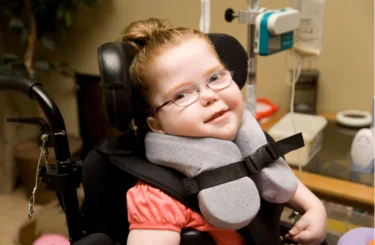When the Decision to Perform a C-Section Comes Too Late
Pregnancy and childbirth can be physically and emotionally stressful, especially if there are complications during labor and delivery. If a baby is in distress or labor has stalled, natural childbirth may be impossible or dangerous for both mother and child. It’s vital that a woman’s health care team make the decision to perform a cesarean section (C-section) where and when it is appropriate – or risk serious consequences.
Why Choose a C-Section?
In the U.S., about one in three births is by C-section. Sometimes, a doctor will recommend and schedule a C-section in advance. This can be because of a history of a prior C-section or an active infection, or it can be due to a pregnancy condition like placental abruption or placenta previa. Some women choose to schedule a C-section for the convenience of knowing exactly when and how their child will be born. Many C-sections, however, occur when labor isn’t progressing safely and well or when the baby seems to be in distress or danger.
Modern obstetric facilities use fetal heartbeat monitoring to ensure a baby’s heart rate is steady and appropriate during labor. The nursing team and the delivering obstetrician regularly check these monitor strips for issues like late decelerations, atypical variable decelerations, variable decelerations with a slow return to baseline, prolonged bradycardia, prolonged tachycardia, and other signs of fetal distress or compromise. If they determine the baby is in trouble, the doctor will often order an emergency C-section. Often, this is a timely solution to a potential problem, and the baby is delivered with no adverse issues. Time is of the essence when distress is apparent, however, and delays can have disastrous consequences.
What Are the Consequences of Delayed C-Sections?
A C-section that is not performed when it should have been can result in serious harm to the mother or baby.
- Physical Injuries. Sometimes, a physician waits to order a C-section until the baby’s shoulders are physically stuck; this situation can lead to damage in the brachial plexus nerves, causing Erb’s palsy (loss of functionality in the arm). Stalled labor can also result in other permanent physical disabilities to both baby and mother that could have been prevented by a timely C-section.
- Oxygen Deprivation. Hypoxic-ischemic encephalopathy (HIE), or oxygen deprivation before, during, or immediately after birth, can lead to various types of brain damage. This can manifest throughout life in many physical and mental forms, including behavior problems, developmental delays, and cerebral palsy. Some studies have linked conditions like autism and attention deficit disorder to HIE, too.
- Seconds count when there are complications during childbirth. If the labor and delivery team doesn’t move quickly to detect infant distress and mobilize for surgery, both mother’s and baby’s lives can be at risk.
Who Is Responsible for a Delayed C-Section?
The many members of the labor and delivery team work together to ensure the safety of the mother and child during the birthing process. Improperly delayed C-sections can be the result of the team’s negligence or failure to appropriately monitor the mother and child, inadequate facilities or conditions to promptly perform the necessary operation, lack of trained personnel or care providers to respond to the situation, or simply a mistake or error in judgment.
If you’ve suffered injury as a result of a delayed C-section, don’t hesitate to call the experienced birth injury team at Sommers Schwartz. Our skilled team of sympathetic advocates will fight hard on your behalf to help you recover what you deserve for birth injuries and other medical malpractice claims. Please contact us today for a free, no-obligation consultation.
Matthew Turner
Matthew Turner is a shareholder with Sommers Schwartz, and focuses his practice on medical malpractice, legal malpractice, ERISA, and class action matters.





